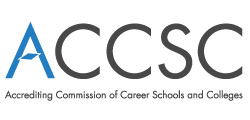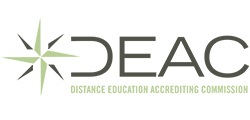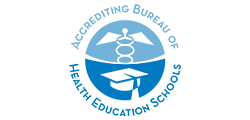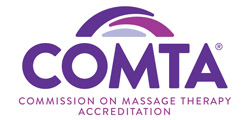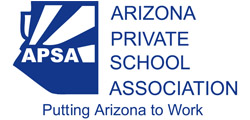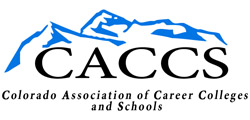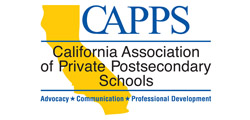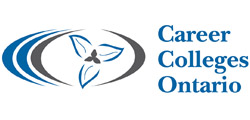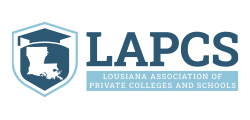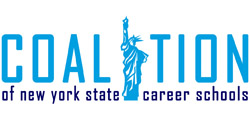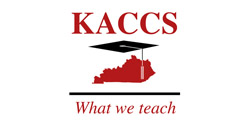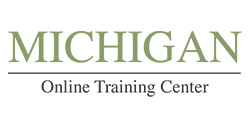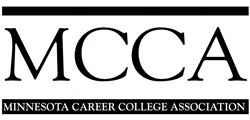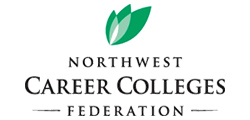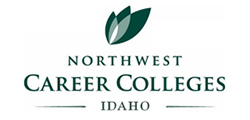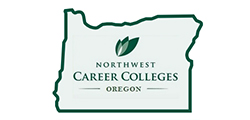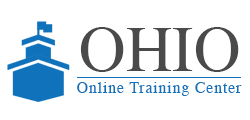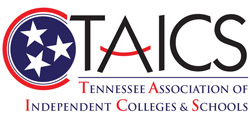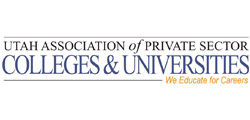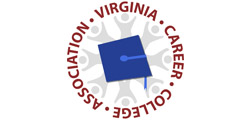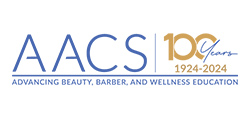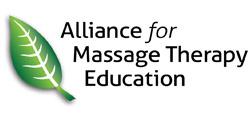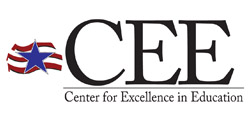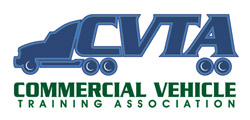Badge Evidence | Completed Courses (4 Hours Each)
CM141FERPA and Privacy: A Practical Approach
The Family Educational Rights and Privacy Act of 1974 (FERPA or the Buckley Amendment) is a federal law in the United States designed to provide students with access to, and the privacy of, their educational records. The law applies to students in higher education and educational institutions that receive funding under a program administered by the U.S. Department of Education. This course is designed to provide participants with a working knowledge of FERPA guidelines to ensure proper handling of educational records and other institutional requirements.
CS123Essential Helping Skills for Career Professionals
Career professionals play a crucial role in empowering job seekers to set goals, overcome challenges, and access vital career development resources. Unfortunately, most career professionals lack adequate training in the art of helping, which can hinder their ability to effectively guide and support others.
This course bridges the training gap, equipping career professionals with essential tools and techniques to become effective helpers in guiding learners to success. Whether you are coaching individuals through career transitions or offering ongoing support, this course enhances your ability to create positive and transformative experiences for those you assist. Gain invaluable insights into effective helping techniques, communication strategies, and discernment of individual needs for providing tailored support. Elevate your skills today and empower others on their journey to achievement.
CS127Strengths-Based Coaching for Career Support Professionals
In today's dynamic career guidance landscape, it's no longer enough to simply place learners in jobs. Modern career support professionals are tasked with empowering clients to excel in their chosen paths. This course, rooted in positive psychology and strengths-based coaching, prepares you to guide learners in discovering and harnessing their unique strengths. It goes beyond recognizing what they excel at. It's about helping them unlock their full potential.
In this course, we'll delve into the nuances of strengths-based coaching, offering practical strategies, tools, and insights to create a lasting impact. By course completion, you will be transformed from a job placer into a trusted guide, empowering learners not only to excel and achieve their goals but to thrive in their careers.
EL105Online Language: Communicating with Students
This course will provide you with information to help you effectively communicate with students and encourage communication among students in an online environment. You will learn the importance of facilitating instructor-to-student (I2S), student-to-instructor (S2I), and student-to-student (S2S) communication. Technology tools play a vital role in the communication process and several are discussed in this course. In addition, discussion is also provided to help you further understand how to manage and measure communication in an online course and help students communicate effectively.
FA231Regulatory Compliance - Outside the Financial Aid Office
This course will help participants to interpret the many rules and regulations that are required by educational institutions offering Title IV funding. It will aid in preparing management and faculty in recognizing that compliance is the responsibility of the entire institution and is not just the job of the Financial Aid Office. Course content will also aid the individual in building a "culture of compliance" which will encourage teamwork and secure the cooperation of others on campus.
LS101RDo You Manage Or Lead?
This course explores the critical differences between management and leadership. Participants will be introduced to definitions and myths about each area as well as how management and leadership must coexist for an organization to operate effectively. Participants will explore their own management/leadership tendencies through exercises to see leadership and management in action.
LS102How Do You Lead?
Not everyone is suited for, or desires, a leadership position. One of the first steps to being an effective leader is to understand the desire to lead in the first place. Participants will explore their motivation to lead and develop a deeper understanding of their leader style(s).
LS103RYour Leadership Impact
To improve your impact and effectiveness as a leader, you must not only understand the role of a leader, but you must also take into consideration the followers and the situation. This course defines leadership impact and explores the interactional framework for leadership.
LS104Your Leadership Legacy
The higher education industry provides a wealth of opportunities and challenges for those seeking leadership positions. In this course, participants will gain a deeper understanding of the higher education sector and themselves. The importance of higher education institutions will be explored along with developing a personal leadership legacy.
LS105RYour Leadership Toolkit
Get ready to add a number of skills to your toolkit as you develop as a leader! This course focuses on increased self-awareness in communication styles and learning; developing deeper understanding through empathic listening; and motivating through innovation.
LS106This Way to Leadership
This course provides you with a framework to put your self-discovery and learning into a workable plan to further develop your leadership skills. A step-by-step process is offered to help you create a meaningful Personal Leadership Development Plan (PLDP) complete with the development of SMART Goals and advice from some of today's leaders in the higher education sector.
ML118Coaching Skills
In this course, you will learn how to strengthen your coaching skills by using a four-step process to facilitate the professional growth of the employees you coach.
ML119Persuasion Skills
To do their job - accomplishing work through others - managers must develop and use persuasion skills rather than simply issue orders. Formal authority no longer gets managers as far as it used to. This course will help you master the art and science behind successful persuasion so you can begin changing others' attitudes, beliefs, or behavior to create win-win solutions.
ML120Feedback Skills
Feedback is an essential component of the communication process. In this course, you will learn when and how to give effective positive or corrective feedback, how to offer feedback upward, and how to receive feedback.
ML122Difficult Interactions
This course will show you how to discuss and resolve difficult interactions in the workplace - whether with employees, peers, bosses, or even suppliers and customers.
ML136Stress Management
In this course, you will learn the difference between positive stress that enhances productivity and negative stress that breeds tension, lowers productivity, and undercuts job satisfaction. The course includes strategies for dealing with underlying causes of worry and stress, with tactical advice and coping mechanisms for immediate problem management.
ML145Process Improvement
In this course, you will learn what business processes are, why improving them is essential, and how to carry out a business process improvement (BPI) initiative.
OP105Developing a Five-year Plan for Your Educational Institution
What will your institution look like in five years? Growth takes change and the commitment of the stakeholders in your organization. A five-year plan is essential for any owner or director of an educational institution, no matter how long they have been in the business. It includes various elements such as your enrollment goals for all programs, plans for new programs, new profit center potential, fees and all financial aid opportunities, enhancement of student services, faculty and staff planning, marketing and development strategies, and planning for physical space to support your expansion goals. Also, development plans are often needed to satisfy licensing and accreditation requirements.
This course covers the essential components and techniques involved in developing a comprehensive five-year plan. We will show you an effective step-by-step planning process that involves the participation of representatives from your institution including staff, instructors, students, graduates, and the employers who hire your graduates. The process encourages participants to share their knowledge and ideas, and everyone who participates in the process ultimately becomes a stakeholder in making the plan work. The course includes planning worksheets that you can download and use to help you develop your institution’s five-year plan.
OP106Developing New Programs: Research and Selection
Educational institutions need to be aware of emerging employment opportunities in new and expanding fields if they are going to continue to attract students. Most licensing and accrediting agencies ask an institution for some form of feasibility study when submitting new program-add applications. The research involved in this step often requires proof of need for the program, number of anticipated job openings, and input from employers. This course outlines ways to collect data to make an effective decision and show regulatory agencies proof of employment opportunities. Step-by-step directions are included to assist institution staff in conducting effective research and preparation of curriculum to meet employer specifications.
OP110Developing Effective Advisory and Governing Boards
Vital advisory and governing boards create additional opportunities to enhance operations within an educational institution. Well-prepared board members engaged in appropriate and timely activities can make a substantial contribution to operational, financial and management success. Creating, managing and maintaining effective advisory and governing boards can be a demanding yet rewarding process. Board members have to be identified, recruited, and trained to be effective and to understand their role as individual contributors and as members of a group of advisors. To gain maximum leverage from a board, members must also remain motivated and retain a concentrated focus on the institution's mission, purpose and goals. This course will provide a blueprint, with accompanying checklists, for establishing and maintaining effective advisory and governing boards in an educational institution.
OP115RHiring the Right Faculty for Your Institution
This course shows you how to hire high-quality instructors and orient them to your institution. The skills also apply to hiring staff. It's easy to hire someone to do a job. But it can be difficult to hire the right person. You want instructors who are top notch. They represent your institution and interact with the most people at your campus and particularly your students. This course starts with how to determine exactly what type of people you need as your instructors. Then it shows you how to recruit and hire them. Once hired, you'll learn how to introduce them to the working environment at your institution. By the time you finish this course, you'll be recruiting, hiring, and orienting quality instructors. You'll see results in improved enrollments, student achievement, retention, and completion.
OP121Managing Online Faculty at a Distance
It is no longer news that predictive learning analytics are changing online classroom instruction. This course teaches current trends in locating, hiring, monitoring and retaining the best professionals that specialize in online instruction. More importantly, this course provides insights for using the new predictive analytic approaches to optimize management of online faculty. Generalized "best practices" are waning in favor of real-time monitoring for individualized qualitative and quantitative analyses. This real-time approach provides significantly increased student success and retention. Also addressed in the course is how to build a strong faculty management team, continuing faculty development recommendations and various business considerations.
RT101Improving Retention through Timely Intervention
How many times have we said “if we’d only known” as a student walks out the door? No one starts classes planning to fail, but unfortunately problems do arise that present barriers to success. Students are good at identifying these problems blocking their path to success, but they frequently don’t have adequate problem solving and communication skills needed to overcome these problems. This course looks at the effect of stress on attrition, the use of tools to identify and help students at risk, and how to develop an institutional culture that shares responsibility for student success across the entire organization.
RT102Orientation and First Week Activities to Increase Retention
Building a program to ensure a smooth "hand off" from Admissions to Faculty is a critical component of student retention. Applicants often develop a strong bond with their admissions representative that ends (from the institution's standpoint) once they begin classes. This online course provides practical ideas on designing an orientation program, first-week-of-class and other retention activities that connect the student with faculty, the college and each other that will help you retain and graduate more students.
RT103Implementing Successful Student Retention Strategies
Owners and directors of educational institutions are always looking for the magical ingredients to improve student retention. There are at least six easy-to-implement retention strategies that can make a difference in whether a student graduates or drops out. These include efficient admissions procedures, great orientation programs, effective mentoring, student friendly classroom involvement, fabulous graduations, and successful placement. Upon completion of this course, participants will have specific easy-to-implement retention strategies to put in place for every area of their institution.
RT104Best Practices to Enhance Student Retention
This course is a collection of ideas and best practices drawn from the implementation of enrollment growth strategies at over 300 educational institutions nationwide. The course is based on a highly successful in-service training program offered by Dr. Joe Pace, Managing Partner of The Pacific Institute and includes video delivery of Pace's presentations. Filled with practical tips and suggestions, the course also discusses the application of current research results on human behavior and organizational culture to enhance student enrollment and retention. This is a unique course that will dramatically change your perspective on institutional effectiveness.
RT105RRaising the Bar to 'First-Class' Customer Service
This course uncovers the secrets of today's successful businesses and their strategies of first-class customer service. You will learn the components of first impressions that can help you increase and keep your enrollments. This course will also help you to locate the specific areas of your operations where you can implement an improved customer service plan for your institution—whether it is admissions, student services or academics.


